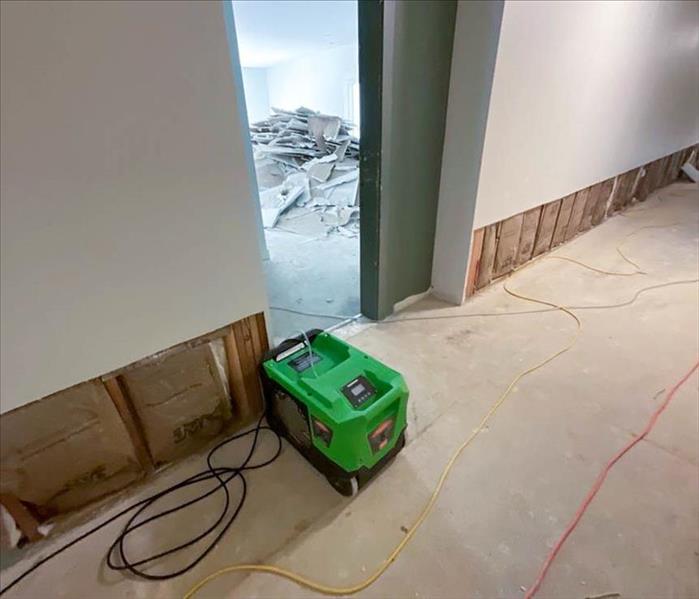Mold Growth After Water Damage: How to Prevent and Treat the Silent Intruder
10/25/2023 (Permalink)
 For severe mold growth, it is advisable to seek assistance from certified mold remediation professionals.
For severe mold growth, it is advisable to seek assistance from certified mold remediation professionals.
Water damage in homes or buildings is an unfortunate event that can lead to various challenges, one of which is the growth of mold. Mold thrives in damp environments and can quickly spread, causing not only damage to the property but also posing potential risks to occupants. In this blog post, we will explore effective strategies for preventing mold growth after water damage and the necessary steps for treatment if mold does occur.
Preventing Mold Growth:
Act quickly: Time is of the essence when it comes to preventing mold growth. Address water damage promptly and start the drying process as soon as possible to minimize the chances of mold spores taking hold.
Proper ventilation: Good airflow helps to prevent excessive moisture buildup. Ensure that your property has adequate ventilation, especially in areas prone to humidity, such as bathrooms, kitchens, and basements.
Monitor indoor humidity levels: Maintain indoor humidity levels between 30-50%. Using dehumidifiers can be helpful in reducing moisture in the air and discouraging mold growth.
Remove wet materials: Discard or dry out any wet or water-damaged materials, such as carpets, furniture, and drywall, within 48 hours to prevent mold growth.
Fix leaks and address water infiltration: Promptly repair any leaks in your plumbing, roof, or foundation that may be causing water damage. Regularly inspect your property for signs of water intrusion, such as damp spots or discoloration, and address them immediately.
Treating Mold Growth:
Safety first: Before attempting any mold remediation, ensure you take proper safety precautions. Wear protective clothing, gloves, goggles, and an N-95 respirator mask to avoid inhalation of mold spores.
Contain the affected area: Use plastic sheeting and duct tape to seal off the impacted area from the rest of the property. This helps prevent the spread of mold spores during the cleaning process.
Remove mold-infested materials: Throw away porous materials heavily infested with mold, such as carpets, mattresses, and upholstered furniture. Non-porous materials can usually be cleaned and salvaged.
Clean and disinfect: Thoroughly clean the affected area with a solution of water and detergent. Once dry, disinfect the area with a mold-killing product approved by the Environmental Protection Agency (EPA).
Proper disposal: Bag and dispose of any mold-infested materials promptly and appropriately. Ensure that they are sealed tightly to avoid spreading mold spores during disposal.
Consult professionals: For severe mold growth or if you are uncertain about handling the remediation process, it is advisable to seek assistance from certified mold remediation professionals who have the expertise, experience, and equipment to effectively treat the issue.
Remember, prevention is key when it comes to mold growth after water damage. By taking immediate action and implementing proper preventive measures, you can minimize the risk of mold infestation in your home or building. However, if mold does occur, it is crucial to address it promptly and effectively to safeguard both your property and its occupants.






 24/7 Emergency Service
24/7 Emergency Service